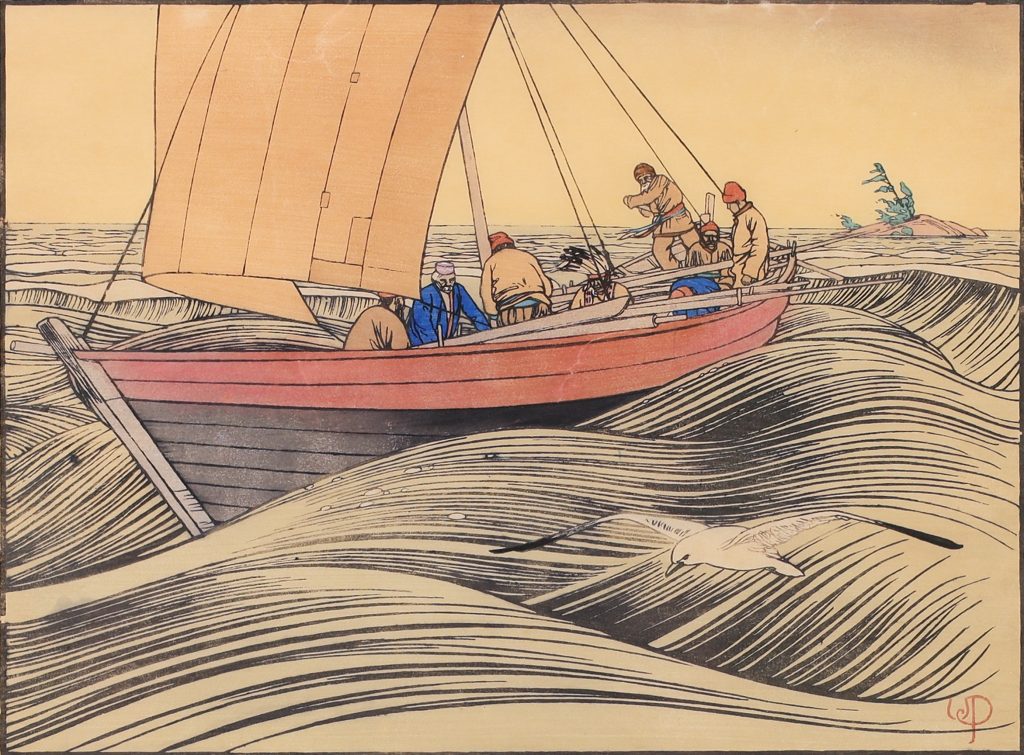SPRING 2025: FINE ART
FEATURED WORKS BY IMPORTANT CANADIAN ARTISTS
This iconic, if not master work, by W.J. Phillips is found in many public collections, with at least 14 of the 150 impressions so documented, (i.e., the National Gallery of Canada, the Winnipeg Art Gallery, and the Glenbow Museum each have two copies).
The York boat was an inland boat developed by the Hudson’s Bay Company for the purpose of competing with the Northwest Company and its skilled crew of French-Canadian canoe builders. The HBC’s men were Orkneymen, equally skilled boat builders, who instead based their designs on the Viking longboats of their heritage. These sturdy, flat-bottomed boats allowed for the efficient transportation of furs and cargo. They were preferred to canoes due to their greater capacity, improved stability on rough water, and performance on rock and ice.
A York boat crew consisted of 6 to 8 “tripmen” who often rowed for up to 16 hours a day. When the water was shallow, the boats were poled. In swift water, the boats were “tracked” – or pulled using two ropes towed by the crew along a riverbank. Parts of the journey involved bushwhacking, and using a roller system to portage the vessel. A mast and square sail would be assembled for open water, the sail serving as a tent at night.
The York boat was named for its ultimate destination, the Hudson’s Bay Company’s York Factory. The boats, which needed replacing after 3 years of use, operated for over a century, with the final brigade arriving at York Factory in the early 1870s. The advent of the railway was a key factor in their decline.



